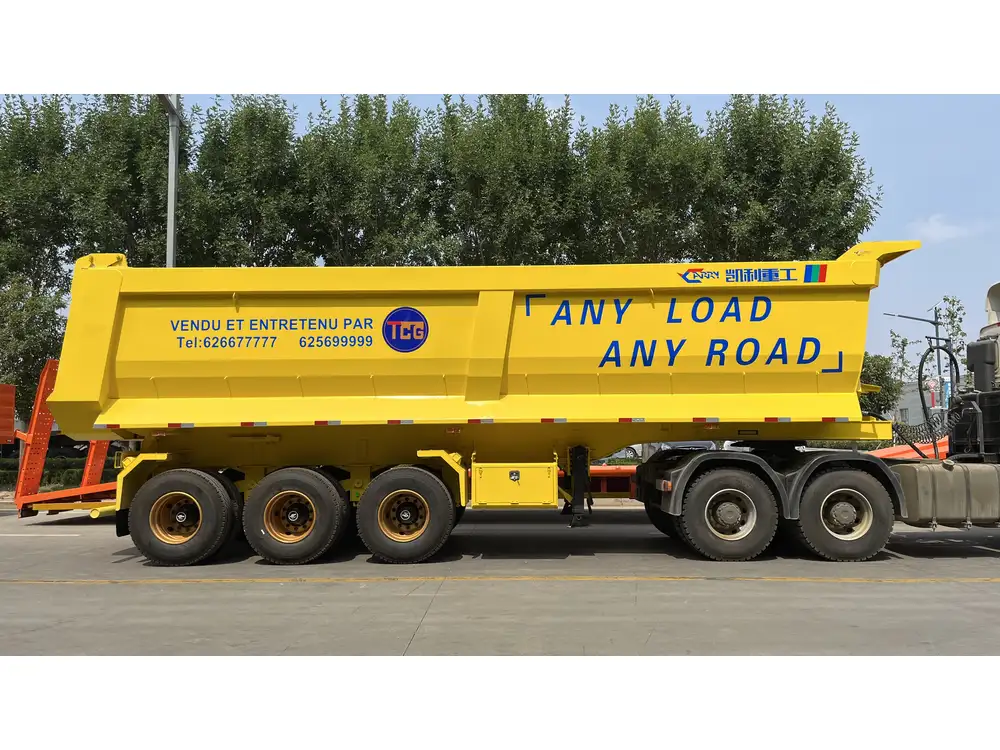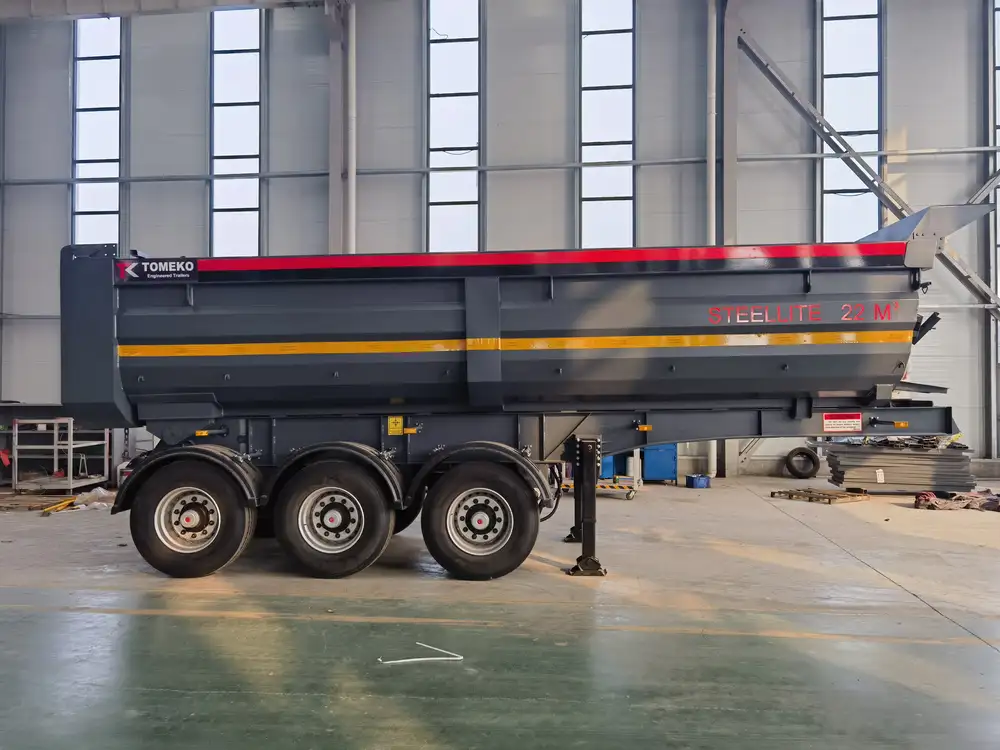When navigating the complex world of logistics and transportation, understanding the specifics of your equipment is paramount. One such piece of equipment that plays a pivotal role in freight transport is the semi box trailer. In this article, we delve into the dimensions of semi box trailers, particularly the crucial aspect of width, alongside additional factors that must be considered when selecting the right trailer for varying applications.
What Is a Semi Box Trailer?
A semi box trailer, commonly referred to simply as a box trailer, is a type of enclosed trailer designed to transport goods securely. Its rigid, box-like construction offers protection from environmental elements, making it a popular choice for transporting a wide array of products ranging from perishable items to delicate machinery.
Common Dimensions of Semi Box Trailers
To make informed decisions about purchasing a semi box trailer, one must familiarize oneself with the standard dimensions that these trailers typically possess. In terms of width, the most common dimensions for semi box trailers are as follows:
| Trailer Type | Width | Height | Length |
|---|---|---|---|
| Standard Box Trailer | 8.5 feet (102 inches) | 13.5 feet (162 inches) | 28 to 53 feet |
| Specialized Trailers | 8.5 feet (102 inches) | Varies | 28 to 53 feet |
| Custom Box Trailers | Varies (up to 102 inches or wider) | Customizable | Customizable |

Regulations and Standards
The width of a semi box trailer is regulated in different regions. In the United States, for instance, federal regulations allow a maximum width of 102 inches (8.5 feet) for commercial vehicles, which encompasses most trailers, including semi box trailers. However, certain states may impose additional restrictions. It is crucial for operators and buyers to understand the legal requirements concerning trailer width and dimensions within their jurisdictions to avoid fines and ensure compliance.
Why Width Matters
Width is not merely a number; it has significant implications for safety, efficiency, and functionality. Here are some factors highlighting why understanding the width of semi box trailers is vital:
1. Compatibility with Road Infrastructure
The width of a semi box trailer affects its compatibility with various road networks and infrastructures. Wider trailers might face restrictions on specific roads and bridges, especially in tight urban areas or older highways. Understanding how your trailer’s width will interact with designated routes can save time and prevent potential rerouting, which can lead to delays.

2. Loading Capacity and Space Utilization
The width of the trailer directly influences the loading capacity. Trailers that are wider can typically accommodate a greater volume of goods, which can lead to increased efficiency in shipping operations. However, broader trailers may also require adjustments in loading techniques and equipment.
3. Stability and Handling
A wider base can enhance the stability of a trailer during transportation, minimizing the risk of tipping or swaying, especially when navigating curves or uneven surfaces. Understanding these dynamics can have profound implications for safety standards and operational best practices.
4. Towing Considerations
The width of a semi box trailer will also impact towing dynamics, including how it interacts with the towing vehicle. Wider trailers can present challenges in maneuverability, particularly in tight spaces or during turns.

Choosing the Right Width for Your Needs
Selecting the appropriate width for your semi box trailer involves consideration of your specific operational needs. To ensure you make the best choice, consider the following:
Analyze Your Cargo Type
Different types of cargo may necessitate different trailer widths. For example, oversized equipment or pallets may require a wider trailer to avoid damage during transport. Conversely, for smaller goods, a standard width might suffice.
Evaluate Your Transportation Routes
Where will you be driving your semi box trailer? If you frequently travel through urban areas, narrower routes may restrict your ability to operate a wider trailer. Understanding the geographical lay of your transportation routes is crucial.

Consider Future Needs
Think about potential changes in your business in the future. Will you expand into handling larger loads? If so, opting for a wider semi box trailer now might save you from needing to upgrade in the near future.
Practical Considerations and Recommendations
While understanding the width of semi box trailers is essential, there are several practical considerations that transport operators and businesses should weigh when selecting the right trailer.
1. Material and Construction Types
Aside from width, the material and construction of semi box trailers affect their functionality. Common materials include aluminum and steel, each offering different advantages in durability, weight, and resistance to corrosion. When choosing your trailer, consider how the construction aligns with your operational requirements.

2. Weight Limits and Payload Capacities
Width often correlates with the maximum permitted weight of a trailer, which is crucial for productivity. Ensure that the dimensions you select accommodate your predicted payload without exceeding legal limits.
3. Trailer Configuration and Customization Options
Many manufacturers offer variations in semi box trailer configurations, allowing customization based on width, height, and other factors. Explore available custom options to optimize your trailer for your specific needs.
| Configuration Options | Description |
|---|---|
| Standard Configuration | Basic width and height |
| Extended Length | Added space for longer cargo |
| Low-Profile Options | Lower height for specific loads |
| Specialty Builds | Tailored for unique industry needs |
4. Regulatory Compliance
As previously stated, be mindful of the compliance regulations for your region. Consider consulting with local authorities or industry experts to avoid costly mistakes and ensure you adhere to local laws.

5. Future Innovations in Trailer Design
As technology advances, semi box trailers are likely to witness improvements in aerodynamics, weight efficiency, and even smart technology integrations. Staying abreast of industry innovations can help you leverage newer, more efficient designs that enhance productivity.
Troubleshooting Common Width-Related Issues
Even after selecting the appropriate dimensions for a semi box trailer, challenges may arise. Here are some common issues and solutions that operators should consider:
Issue: Difficulty Navigating Tight Spaces
Solution: Invest in training programs for drivers that focus on maneuvering larger trailers. Additionally, consider specific trailer configurations that are designed to improve handling in tight spaces.

Issue: Overloading or Not Utilizing Capacity
Solution: Conduct regular audits of cargo loads and trailer capacities. Implement a system to manage loads effectively and ensure full utilization of trailer space while remaining within legal limits.
Issue: Regulatory Compliance Conflicts
Solution: Establish a dedicated compliance team or hire consultants who are experienced in the transportation industry to keep you informed on regulations that affect your operations.
Conclusion
Understanding the dimensions of semi box trailers, particularly their width, is essential for effective freight transport and logistics management. The importance of width extends beyond simple measurement; it encompasses considerations such as roadway compatibility, cargo type, efficiency in loading practices, and compliance with regulatory standards.
Choosing the right semi box trailer is a multifaceted decision-making process, one that should be rooted in an in-depth analysis of operational needs, potential future demands, and insights into regulatory requirements. By considering all aspects of trailer width, materials, and configurations, transportation companies can position themselves advantageously in a competitive marketplace, ensuring reliability and efficiency in their operations.
Investing time in researching and understanding these factors, combined with proper logistical planning, allows operators to optimize their fleet, better serve their clients, and ultimately drive business growth.



